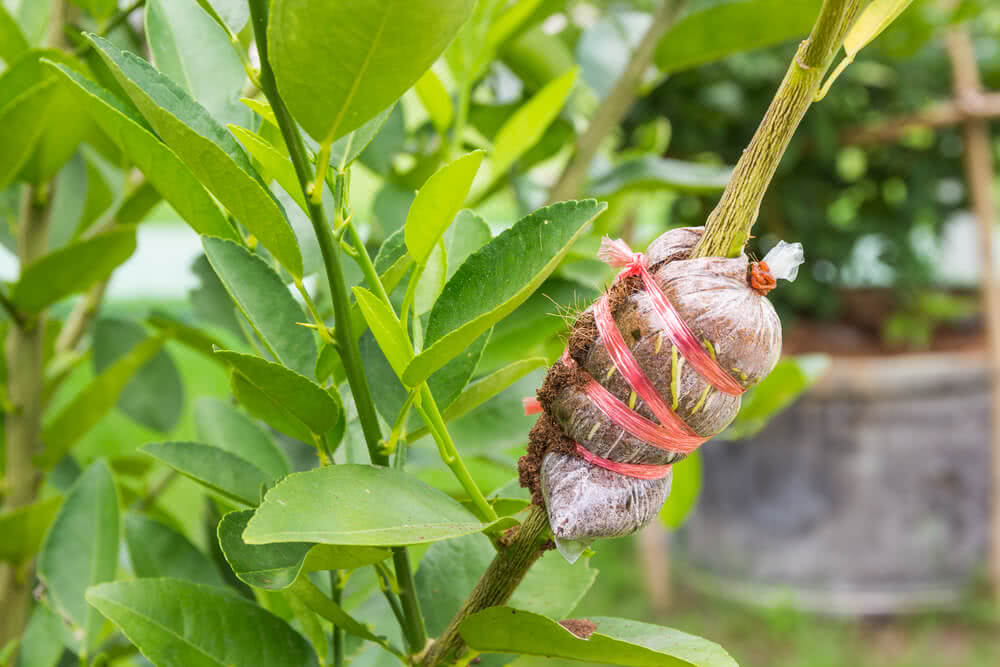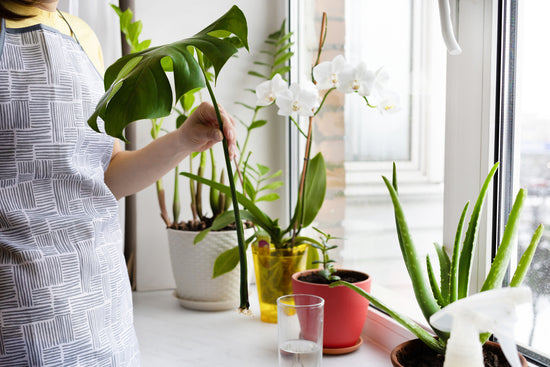Layering is the method of inducing roots on the stem while it is still attached to a plant; & then cutting it once the roots are formed for further transplantation. The objective of layering is same as that of stem cuttings i.e. for clonal propagation of plants. The only difference is that root induction in layering is done before the branch is separated from the mother plant, which ensures higher success rate.
Also Read: How to Grow Plants from Stem Cuttings

• About Air Layering
There are different types of layering like Simple layering, Mound layering, Compound layering, etc. but most commonly practised method is Air Layering or Gootee layering. A layer is a selected shoot which is allowed to form its roots before it is disconnected from the parent. The process of making a layer on the high branches is known as air layering or ‘gootying’.

Plants grown by air layering:
Air layering is a traditional method of vegetative propagation of woody shrubs, creepers and trees. Flowering shrubs like Bougainvillea, Hibiscus, Tabernaemontana, Magnolia are well-known examples of propagation by this method. Foliage plants like Ficus, Crotons, Aralia are also successfully propagated by air layering. For fruiting trees like Citrus, Mango, Guava, layering is one of the best methods of propagation; grafting being the other one.

Learn in detail ‘what is grafting’?
Steps for plant propagation by air layering:
- Shrub or tree with medium sized branches that are suitable for layering is selected.
- Choose a non-flowering healthy branch which is neither too young nor too old.
- Cut off most of the old, mature leaves at the portion of the branch where layering is to be done.
- At an appropriate distance, remove the peel ring of bark (3-5 cm) circularly and expose the inner tissue.
- Apply rooting hormone to the wound by a painting brush.
- Cover the wound with wet sphagnum moss which is pre-imbibed in water.

- Cover the moss by polyethene paper & tie the polyethene on either side by a thread; this will hold the moss on the wound. The structure should look like a toffee covered in a wrapper. This structure is called as Gootee.
- Make incisions on Gootee by the blade for aeration.
- After 2-3 weeks or 1-2 months, depending on species, roots will be formed. Young root tips will be visible from the Gootee.
- Once roots are formed, detach the branch from the main plant along with the roots.
- Transplant the layered branch in soil/pot/poly bag as a new sapling.

When to do air layering?
The ideal time to perform air layering on plants is anytime during monsoon. Mostly all the layers are made in the month of July, and the branches are separated in August-September. Coconut fibre can also be used in place of Moss. In the rainy season, some gardeners also use soil around the cut, kept moist with the piece of a gunny cloth.

Instead of just pruning an overgrown shrub in your garden, it will be a good idea to practice air layering on its branches.
What say, fellow gardeners?
Lets Ugaoo!












